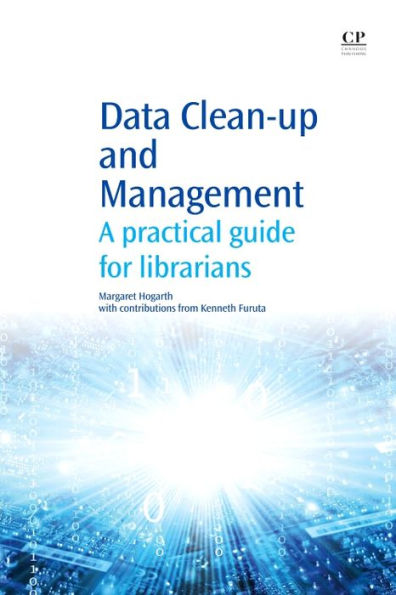Data Clean-Up and Management: A Practical Guide for Librarians
Data use in the library has specific characteristics and common problems. Data Clean-up and Management addresses these, and provides methods to clean up frequently-occurring data problems using readily-available applications. The authors highlight the importance and methods of data analysis and presentation, and offer guidelines and recommendations for a data quality policy. The book gives step-by-step how-to directions for common dirty data issues. - Focused towards libraries and practicing librarians - Deals with practical, real-life issues and addresses common problems that all libraries face - Offers cradle-to-grave treatment for preparing and using data, including download, clean-up, management, analysis and presentation
1112546828
Data Clean-Up and Management: A Practical Guide for Librarians
Data use in the library has specific characteristics and common problems. Data Clean-up and Management addresses these, and provides methods to clean up frequently-occurring data problems using readily-available applications. The authors highlight the importance and methods of data analysis and presentation, and offer guidelines and recommendations for a data quality policy. The book gives step-by-step how-to directions for common dirty data issues. - Focused towards libraries and practicing librarians - Deals with practical, real-life issues and addresses common problems that all libraries face - Offers cradle-to-grave treatment for preparing and using data, including download, clean-up, management, analysis and presentation
120.0
In Stock
5
1

Data Clean-Up and Management: A Practical Guide for Librarians
578
Data Clean-Up and Management: A Practical Guide for Librarians
578
120.0
In Stock

Product Details
| ISBN-13: | 9781780633473 |
|---|---|
| Publisher: | Chandos Publishing |
| Publication date: | 10/22/2012 |
| Series: | Chandos Information Professional Series |
| Sold by: | Barnes & Noble |
| Format: | eBook |
| Pages: | 578 |
| File size: | 22 MB |
| Note: | This product may take a few minutes to download. |
About the Author
From the B&N Reads Blog
